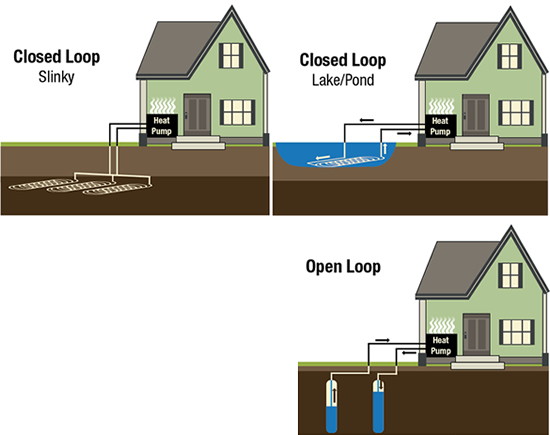Ground Source Heat Pumps (GSHP)
Federal Tax Credits for Energy Efficiency
What is Ground Source Heat Pump (GSHP) Technology?
GSHPs are electrically powered systems that tap the stored renewable energy of the greatest solar collector in existence—the earth. These systems use the earth's relatively constant temperature to provide heating, cooling, and hot water for homes and commercial buildings.
How Does It Work?
A few feet beneath the surface, the earth's temperature remains fairly constant year-round, ranging from 45ºF or so in northern latitudes to about 70ºF in the deep south. GSHPs take advantage of this constant temperature to provide extremely efficient heating and cooling.
What are the Different Types of Outdoor Loop Fields?
Loops can be installed in four basic configurations: horizontal slinkys, vertical bore holes, pond and groundwater loop systems.

In closed loop systems, a water/antifreeze solution circulates through pipes buried in the ground. This solution absorbs heat from the earth and carries it into the home. The GSHP system inside the home uses a heat pump to concentrate the earth's thermal energy and transfer it to air circulated through standard ductwork to fill the interior space with warmth. (Hot water GSHPs are also available and are ideally suited for radiant slab heating.) In the summer, the process is reversed; heat is extracted from the air in the house and transferred through the heat pump to the ground loop piping.
Open loop GSHP systems operate on the same principle as closed loop systems and can be installed where an adequate supply of suitable water is available and open discharge is feasible. A closed loop geothermal heat pump pipes fluid in a closed piping system underground, which receives heat from or discharges heat to the earth.
Questions on Energy Conservation?
Phone: 218-355-2843
Email: customerprograms@mnpower.com
Sign up for our Energy Team emails here


